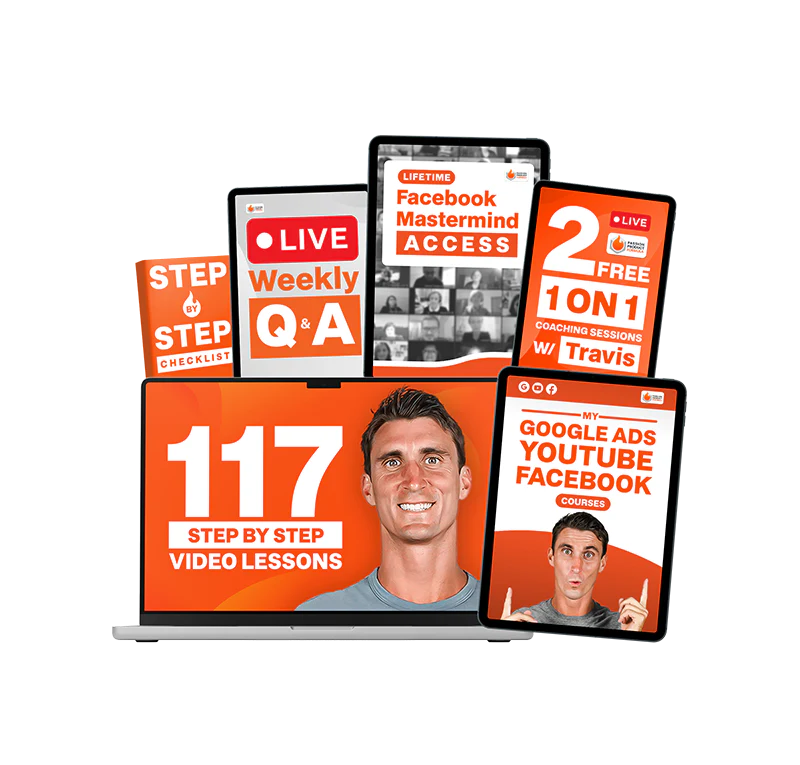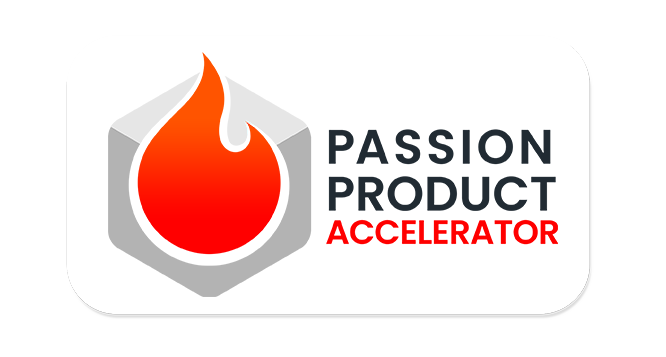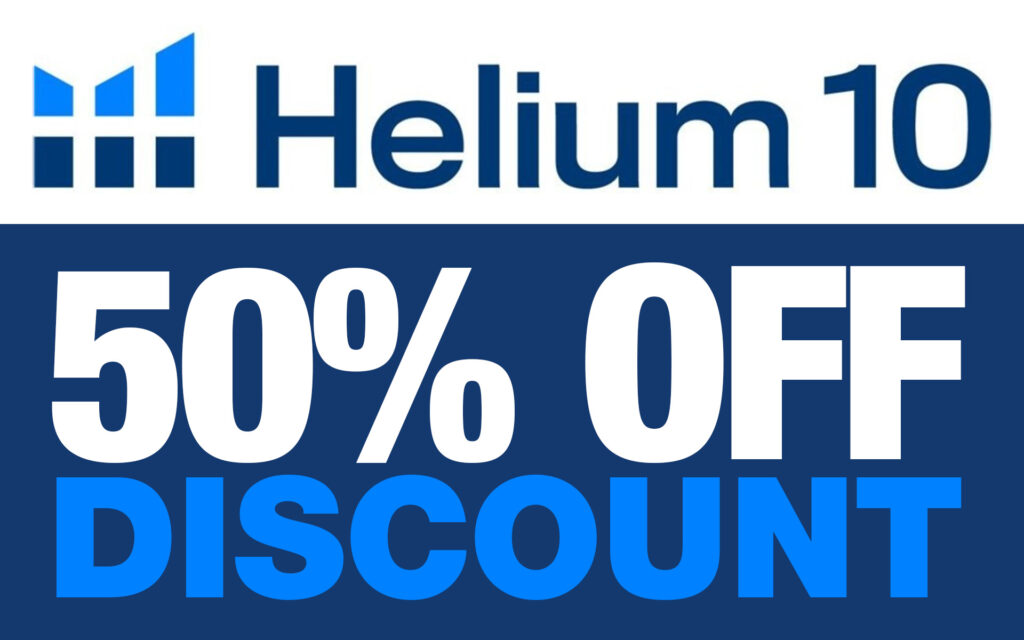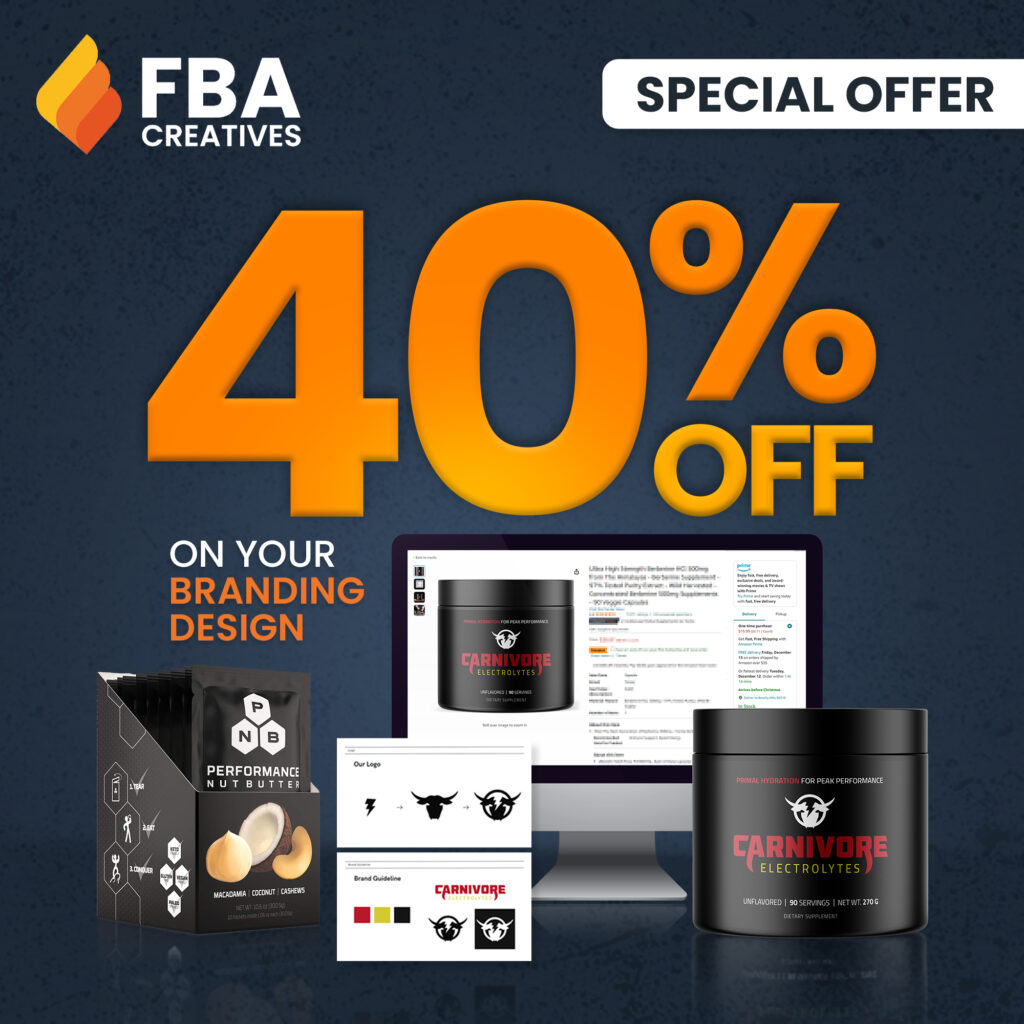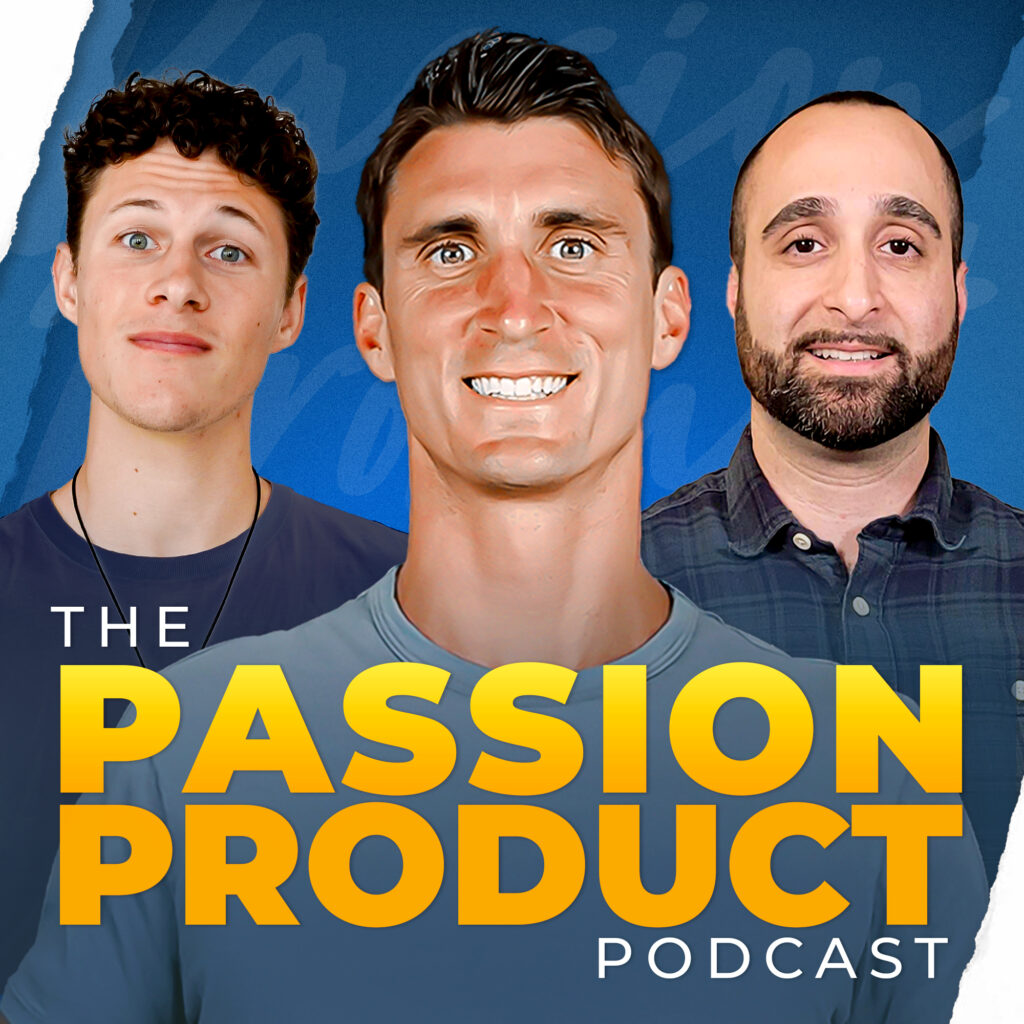Picture this: while you sleep, products fly off virtual shelves and money flows into your bank account. This isn’t a fantasy, it’s the reality for thousands of Amazon FBA sellers who’ve cracked the code. In fact, 43% of all Amazon sellers make over $100,000 per year, and many have transformed their lives from trapped corporate employees to thriving entrepreneurs. The platform processed over $600 billion in sales last year alone, with two-thirds coming from third-party sellers just like you.
However, here’s what most people don’t realize about building a successful Amazon business: the secret ingredient isn’t just finding any profitable product, it’s discovering your Passion Product. This powerful formula combines what you genuinely love with proven market demand, creating a business that’s not only profitable but sustainable and enjoyable. Throughout this comprehensive guide, you’ll discover the exact seven-step framework that took one seller from zero to over $1 million in annual revenue with a shoe cleaning brand, plus an additional $1.48 million with a purchased business called Maverick. Moreover, you’ll learn how to apply the Passion Product Formula to either launch your own brand from scratch or transform an existing business into a massive success story.
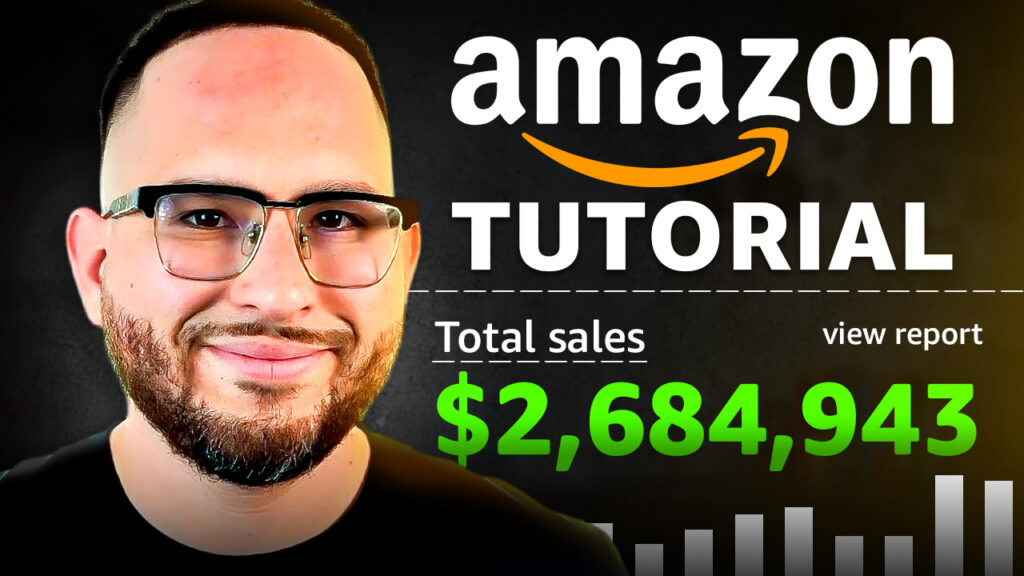
- Why Amazon FBA is Perfect for Passion Products
- Step 1: Find Your Passion Product – The Goldilocks Zone
- Step 2: Set Up Your Amazon Seller Account
- Step 3: Create a Brand That Reflects Your Passion
- Step 4: Find the Right Manufacturer for Amazon
- Step 5: Create a Listing That Showcases Your Passion
- Step 6: Ship to Amazon's Warehouse – The Passive Income Unlock
- Step 7: Amazon Launch Strategy – The Honeymoon Phase
- The Game-Changer: Amazon PPC (The Hidden Passion Product Multiplier)
- Real Results: The Passion Product Formula in Action
- Overcoming Common Obstacles
- Your Action Plan: Implementing the Passion Product Formula
- From Side Hustle to Empire: Your Amazon FBA Journey Starts Today
- Frequently Asked Questions
Why Amazon FBA is Perfect for Passion Products

Amazon FBA stands as the ultimate platform for turning your passion into profit. Why? Because it handles the heavy lifting while you focus on what you love. With 200 million Prime customers actively searching for products, your potential audience is massive. The platform receives 2.4 billion monthly visitors. Your passion-based product gains instant access to this hungry audience. Furthermore, the platform’s built-in trust and infrastructure work in your favor. Customers feel confident buying from you, even as a new seller. Amazon’s reputation backs your product.
The FBA (Fulfillment by Amazon) program transforms your business into a truly passive income stream. It manages storage, packing, and shipping for you. Consequently, you spend your time on creative pursuits. You’ll develop better products, craft compelling marketing, and connect with your niche community. You won’t be boxing orders in your garage. This system allows you to occasionally email your manufacturer for more inventory. Then watch as Amazon’s warehouse team handles everything else. This creates the freedom-based business you’ve always dreamed about.
Step 1: Find Your Passion Product – The Goldilocks Zone
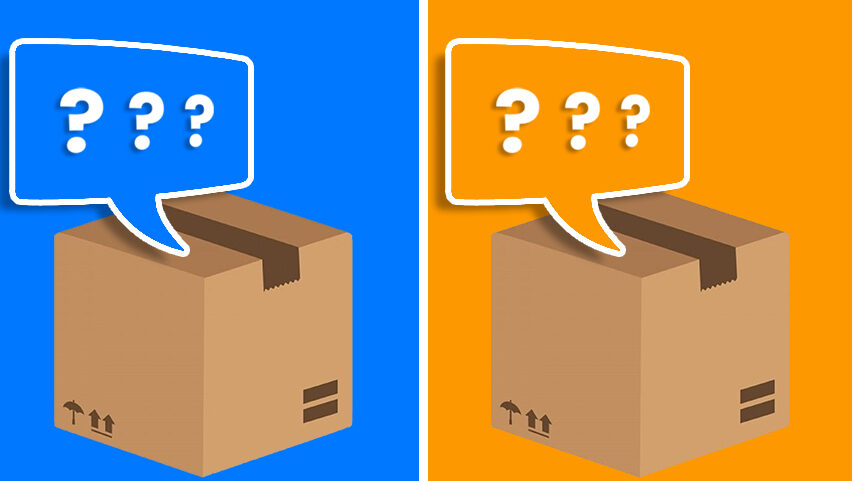
The Passion Product Formula in Action
The Passion Product Formula begins with a simple but profound question: What do you genuinely care about? Consider how one entrepreneur’s love for sneakers sparked an idea. He wanted a premium shoe cleaning kit. This product felt personal, authentic, and exciting to develop. This passion wasn’t just motivational fluff. It provided expert knowledge about what sneakerheads actually wanted. It created natural marketing opportunities within communities he already belonged to. The passion sustained him through the inevitable challenges of launching a business.
Nevertheless, passion alone doesn’t pay the bills. You need to validate that real customers want what you’re excited to sell. This is where strategic market research transforms enthusiasm into viable opportunity. By combining your genuine interests with proven demand signals on Amazon, you create a sweet spot. Profitability meets personal fulfillment. This ensures you’ll stick with your business through the ups and downs. Every entrepreneur faces challenges.
Amazon Product Research Tools and Methods
Amazon literally shows you the money if you know where to look. The Bestseller tab serves as your personal treasure map. Navigate to any main category, then drill down into subcategories. These are the niches where competition decreases and profits increase. You’ll discover what’s currently selling like hotcakes. For example, you might click through Baby > Baby Care > Diapering. This reveals specific products that parents desperately need. They willingly pay premium prices for these items.
Here’s where the magic happens. Scroll to the bottom of any product listing to find its Best Seller Rank (BSR). Then paste that number into the free Jungle Scout estimator tool. Subsequently, select the appropriate category. Watch as the tool reveals stunning insights. For instance, a teething toy selling 82,500 units monthly at $14 each generates over $1.1 million in monthly sales. This simple technique instantly shows you which products print money. It validates whether your passion aligns with market demand.
Amazon Keyword Research with Helium 10

Bestseller research reveals what’s working now. However, Helium 10‘s Magnet tool uncovers hidden opportunities that nobody’s capitalized on yet. Simply type a keyword related to your passion area into the Magnet tool. You’ll discover exactly how many people search for it monthly on Amazon. For instance, if you’re passionate about outdoor cooking, you’ll see search volumes. Terms like “camping cookware,” “portable grill,” or “backpacking stove” reveal the size of your potential customer base.
The real power emerges when you sort results by Magnet IQ score. This highlights keywords with strong search volume but weak competition. Sometimes you’ll discover that thousands of people search for a specific product variation. Yet when you check Amazon, no quality product exists to meet that demand. This gap represents your golden opportunity. Create that missing product and you’ve essentially built a business with pre-validated customers. They’re already searching for what you’re about to offer.
Pricing Strategy for Amazon FBA Products
Pricing strategy can make or break your Amazon business before you even launch. Understanding the Goldilocks zone is absolutely critical. Products priced under $15 struggle to generate profit. You’ll face Amazon’s 15% selling fee, FBA pick-and-pack charges, manufacturing costs, and advertising expenses. You’re left with crumbs, not a sustainable business. Conversely, products exceeding $85 become deliberate purchases rather than impulse buys. This means customers research extensively, compare options, and often abandon their carts. This dramatically hurts your conversion rates.
The sweet spot lives between $15 and $85. In this range, customers feel comfortable clicking “buy now” without overthinking. Meanwhile, you maintain healthy profit margins. Take the shoe cleaning kit example. Priced at $18 initially, it generated $125,000 in revenue during its first year. Profit reached $48,000. By year two, that same product scaled to $320,000 in revenue. This proves that proper pricing within this range creates sustainable, scalable businesses. Results compound over time.
Step 2: Set Up Your Amazon Seller Account

Choosing Your Plan
Amazon offers two distinct seller plans. Choosing correctly from the start saves you money and unlocks crucial features for growth. The Individual plan costs nothing upfront but charges 99 cents per item sold. This seems attractive to cautious beginners. However, if you plan to sell more than 40 items monthly, the Professional plan makes more sense. At $39.99 per month, it actually costs less. Plus, you get access to advanced advertising tools, bulk listing capabilities, and detailed analytics. Individual sellers never see these features.
Therefore, most serious sellers skip the Individual plan entirely. They start with Professional from day one. They treat that monthly fee as their commitment to building something substantial. Additionally, the Professional plan signals to Amazon that you’re a legitimate business operator. This potentially improves your account standing. You’ll get access to new features as they roll out. This small investment pays dividends immediately. You’ll benefit from the tools and credibility it provides.
Setting Up Your Amazon FBA Seller Account
Setting up your seller account requires gathering a few essential documents. But the process moves quickly once you’re prepared. You’ll need your ID or passport, business information if applicable, and a bank account for receiving payments. Amazon walks you through each step systematically. Furthermore, plan on a few days for approval after submission. During this time, Amazon verifies your identity. They ensure you’re a legitimate seller rather than a potential fraudster.
The process begins with deciding whether to use your personal Amazon account or create a dedicated business account. Most successful sellers choose the latter for clean separation. This keeps shopping and selling activities separate. After entering your basic information, you’ll select your business structure. Upload your ID, choose your store name, and submit your application. Then simply wait for Amazon’s approval email. This officially grants you access to the world’s largest e-commerce platform.
Business Structure Options
Legal structure matters more than most new sellers realize. It impacts everything from taxes to personal liability if something goes wrong. An LLC (Limited Liability Company) costs around $200 through services like WYRegistered.net. It creates a crucial barrier between your personal assets and business liabilities. This means if your product faces a lawsuit, creditors can’t seize your house or personal savings. This protection alone justifies the small upfront investment.
Alternatively, a DBA (“Doing Business As”) costs just $99 through Legal Zoom. It works great for branding purposes. You can operate under a catchy business name even if you’re a sole proprietor. However, DBAs provide zero legal protection. They serve purely as a marketing tool rather than a liability shield. Consequently, serious sellers usually start with a DBA for immediate launch. Then they transition to an LLC once revenue reaches consistent levels. This balances cost-consciousness with smart risk management.
Step 3: Create a Brand That Reflects Your Passion

Why Branding Matters for Passion Products
Today’s consumers scroll past generic products without a second glance. They stop only for brands that spark emotion and communicate quality instantly. Your passion naturally translates into authentic branding when you genuinely care about the niche. A sneaker enthusiast creates different imagery than someone who randomly chose shoes for profit potential. Moreover, strong branding justifies premium pricing. This allows you to charge $25 instead of $15 for essentially similar products. Customers perceive yours as higher quality and more trustworthy.
This perception extends beyond just your logo. It encompasses your entire visual identity. Your main product image, packaging, and listing’s color scheme all matter. When someone who loves camping creates outdoor gear, that authentic enthusiasm shines through. They pay attention to details that manufactured brands simply can’t replicate. Therefore, investing time and money into professional branding isn’t vanity. It’s the difference between blending into a sea of identical products and standing out. You become the obvious choice for passionate customers in your niche.
Design Resources and Options
Creating professional branding doesn’t require you to become a designer overnight. Several excellent resources exist at various price points. Fiverr.com serves budget-conscious sellers with logo designs starting at just $5. However, quality varies wildly. You’ll often need multiple revisions to get something acceptable. Upwork raises the bar significantly with more experienced designers. They charge higher rates but deliver polished, professional work. Your brand looks legitimate from day one.
For those wanting something truly special, 99designs runs competitions. Hundreds of designers create options based on your brief. Then you select the winner. This ensures you get exactly what you envision. Meanwhile, FBAcreatives.com specializes specifically in Amazon businesses. They handle everything from logos to packaging to listing optimization. Their teams understand what converts on the platform. They’ve even offered a 40% discount through this code TRAVIS in FBAcreatives. This makes professional Amazon-specific design surprisingly affordable. Perfect for sellers serious about standing out in crowded marketplaces.
Visual Elements That Convert
Your main product image carries the weight of your entire business. It’s the first and often only element customers see before deciding to click. This single image must immediately communicate quality, show the product clearly, and pop off the screen. It needs to stand out compared to surrounding competitors. Furthermore, the best main images maximize the available space. If you’re selling a kit with multiple pieces, show every component neatly arranged. Don’t just show the package. This gives customers instant visual value that justifies your price.
Beyond the main image, side images, packaging, and even your logo work together. They tell a cohesive story about who you are. They explain why customers should trust you. When someone clicks your listing, they should encounter consistent colors, messaging, and style. This reinforces their initial positive impression. This consistency builds subconscious trust. It makes customers comfortable clicking “add to cart.” Everything about your brand signals professionalism and quality. You’re not raising red flags about a fly-by-night operation.
Step 4: Find the Right Manufacturer for Amazon

Where to Source Amazon FBA Products
Sourcing your product requires choosing between several distinct paths. Each has advantages depending on your product type and business goals. Alibaba.com dominates the overseas manufacturing space. It’s the go-to platform for connecting with factories primarily in China. You’ll find incredibly low per-unit costs that maximize your profit margins. Simply type your product concept into the search bar. You’ll see a list of hundreds of manufacturers ready to produce your goods at scale. Many offer surprisingly low minimum order quantities for new sellers.
However, domestically-produced goods increasingly make sense for certain product categories. This especially applies to consumables or items where “Made in USA” provides significant marketing advantages. ThomasNet.com operates similarly to Alibaba but connects you with American manufacturers. They offer faster shipping times and easier communication without language barriers. You can verify quality control with quick visits. Finally, don’t overlook the old-school approach. Simply Google “[your product] manufacturer” and reach out directly. Sometimes the best partnerships come from smaller operations. These aren’t actively marketing on major platforms.
Key Communication Points
When contacting manufacturers, clarity about your needs saves everyone time. You’ll get accurate quotes quickly. Lead with your MOQ (Minimum Order Quantity) question. This number determines whether you can afford to work with them. Some factories require thousands of units. Others accommodate small test batches of 100-200 pieces. Additionally, request samples before committing to full production runs. Photos often hide quality issues. These become apparent only when you hold the physical product.
Furthermore, communicate your quality expectations clearly from the start. This especially matters if your passion gives you specific expertise. You know what “premium” means in your niche. A sneaker enthusiast knows which materials feel cheap versus quality. They understand which stitching holds up and which details matter to customers. Share this knowledge with manufacturers to ensure your final product meets standards. Your niche demands these standards. This upfront investment in communication prevents costly mistakes. You won’t receive thousands of units that don’t match your vision or meet customer expectations.
Cost Considerations in Amazon fBA

Understanding startup costs helps you budget realistically. You’ll avoid the shock that derails many aspiring sellers before they launch. Starting an Amazon FBA business from scratch typically requires $10,000 to $50,000. This accounts for inventory purchases, shipping, photography, listing optimization, initial advertising, and business setup costs. This range varies dramatically based on your product’s complexity. Manufacturing location matters. Order quantities matter. Simpler products with domestic manufacturing and small test orders hit the lower end. Complex items from overseas with large minimum orders push toward the upper limit.
These numbers intimidate many passionate would-be entrepreneurs. They have the knowledge and drive but lack the capital. This brings us to an alternative approach. Instead of starting from zero, you can purchase existing Amazon FBA businesses. These have proven sales and skip the expensive setup phase entirely. Moreover, many business brokers like Empire Flippers facilitate seller financing arrangements. You pay 50% upfront and the remainder over time from the business’s own profits. Suddenly that $190,000 business becomes accessible with $95,000 down. You’ll make manageable monthly payments.
The Alternative: Buying Existing Businesses
Purchasing established Amazon businesses offers compelling advantages. This works for those with capital but limited time or patience for the startup grind. When you buy an existing business, someone else has already handled product development. Photography is done. Listing creation is complete. The painful process of getting initial reviews is finished. You’re buying a turnkey operation that generates revenue from day one. The Maverick brand purchase illustrates this perfectly. For $190,000, the buyer acquired a business making $72,000 annually. It just needed optimization expertise to explode.
Additionally, buying businesses plays to your strengths if your passion involves improving systems rather than creating from scratch. Perhaps you love analyzing data, optimizing advertising, or refining product listings. All these skills transform struggling businesses into profit machines. You don’t need to source products or build brands from nothing. Through platforms like Empire Flippers, you’ll find hundreds of Amazon businesses for sale. Many come from burned-out owners. They built something profitable but lack the energy or expertise to scale it further. This creates perfect opportunities for entrepreneurial buyers. You see the hidden potential others miss.
Step 5: Create a Listing That Showcases Your Passion
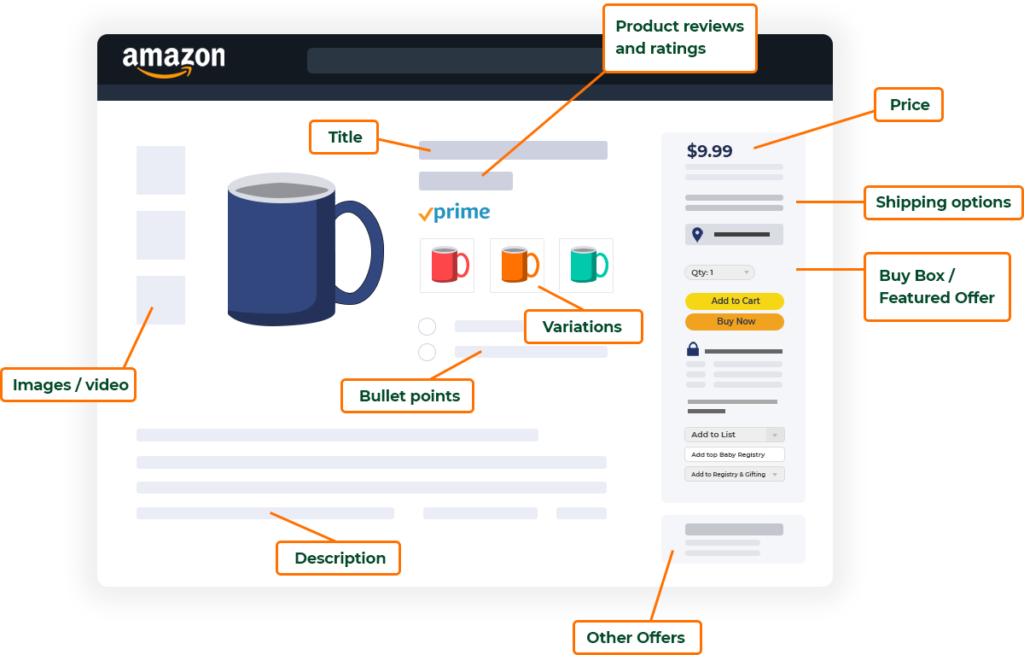
Understanding Amazon’s Search Algorithm
Amazon fundamentally operates as a search engine, not just a store. This means customers find your product by typing keywords into the search bar. They’re not browsing aisles. This crucial distinction changes everything about how you structure your listing. Amazon’s algorithm doesn’t know what you’re selling until you explicitly teach it. You do this through strategic keyword placement. Therefore, your title, bullet points, and description must incorporate every relevant search term. These are terms potential customers might use. You’re training Amazon to show your product when those searches occur.
Think of it like this. When someone types “sneaker cleaning kit,” Amazon scans all product listings for those exact words. It shows products that mention them prominently. If your amazing shoe cleaning product uses only the words “footwear washing system,” Amazon won’t connect it. Thousands of people search “sneaker cleaning kit” monthly. You’ll miss out on sales despite having the perfect product. Consequently, keyword research isn’t optional. It’s the foundation that determines whether your product succeeds or languishes unseen. You don’t want to be on page seventeen of search results where nobody ventures.
Amazon Product Title Optimization Guide
Your product title might not win any creative writing awards. But it can win you thousands of sales by cramming in high-value keywords. Customers actually search for these. For example, “Factory Lace Shoe Cleaning Kit – Complete Sneaker Cleaning Kit and Shoe Cleaners for All Shoes” sounds awkward and repetitive. Yet it strategically targets multiple keywords that different customer segments might type. Someone searching “shoe cleaning kit” finds you. Someone else searching “sneaker cleaning kit” finds you. Even someone typing “shoe cleaners” lands on your product. You’ve tripled your visibility compared to a “clever” title that ignores search behavior.
This approach requires abandoning ego about writing elegant prose. Instead, embrace data-driven optimization that feels clunky but performs beautifully. When the Maverick brand got purchased, one of the first improvements involved completely rewriting the title. They incorporated additional high-volume keywords that the previous owner had missed. Subsequently, this simple change boosted visibility and sales significantly. Suddenly thousands of additional searches started returning the product in results. All from spending thirty minutes researching and rewriting a title.
The Power of Visual Storytelling
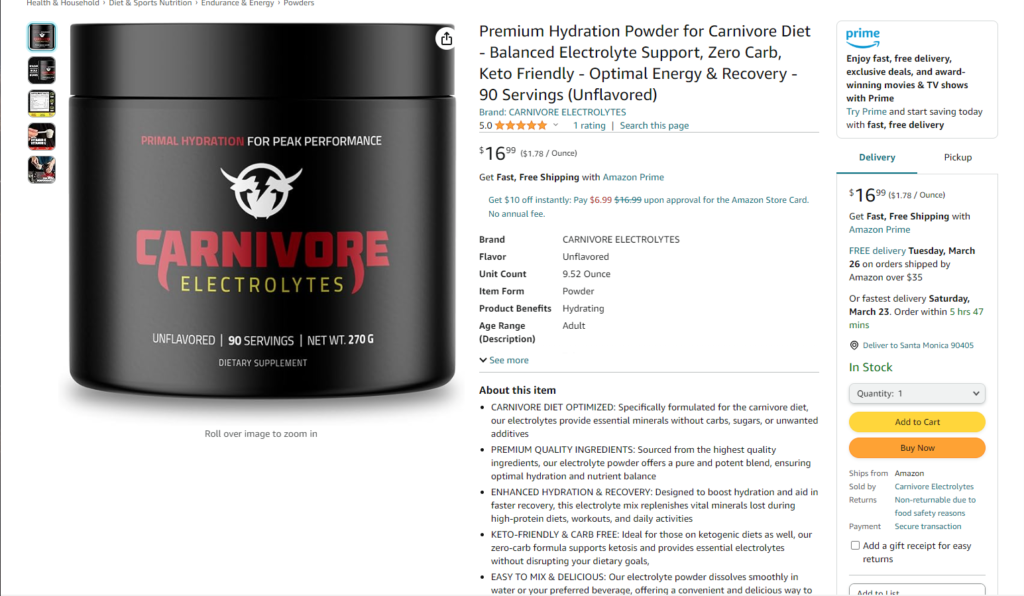
Modern consumers predominantly shop with their eyes rather than reading detailed descriptions. This makes your main image the single most important element of your entire listing. In fact, most customers scroll through search results. They glance at images for two seconds each. Then they click on whichever product looks most appealing. They don’t read a single word of text. This behavior means your main image must immediately communicate quality, value, and professionalism. It needs to occupy as much visual space as Amazon allows.
The transformation of the Maverick brand’s main image perfectly illustrates this principle’s power. They redesigned the photo to showcase the product more prominently and professionally. Sales increased noticeably despite no other changes. The product itself didn’t improve. The price didn’t change. The description remained identical. Yet more customers clicked because the image stood out in search results. Therefore, investing in professional product photography isn’t a luxury for passion products. It’s a necessity that directly impacts your bottom line. It determines what percentage of searching customers even give your listing a chance.
Side Images and Benefits
Once customers click your main image and land on your full listing, side images take over the storytelling. They show your product in context and highlight key benefits visually. Use these additional photos to demonstrate your product in action. Show size comparisons. Highlight material quality. Address common questions that might otherwise prevent purchases. For instance, a camping cookware set might show someone actually cooking over a fire. Show the pieces nesting together for compact storage. Include a size comparison with a standard water bottle. Customers understand dimensions.
Moreover, side images provide opportunities to inject your passion and expertise into the presentation. You’ll include details that mass-market brands overlook. Someone who genuinely loves camping knows which specific features matter to fellow enthusiasts. Show reinforced handles that won’t melt near flames. Demonstrate how the set fits perfectly into a standard backpack pocket. These authentic touches resonate with passionate customers in your niche. They recognize you “get it” in ways that generic sellers don’t. This builds trust that converts to sales.
Amazon’s Bullet Point Optimization
Amazon’s bullet point section serves double duty. It trains the algorithm with additional keywords. It also persuades human customers to purchase by highlighting benefits and features. Each bullet should pack in relevant search terms. At the same time, describe why customers should choose your product over competitors. For example: “PREMIUM BRISTLE BRUSH – Soft-bristle shoe brush gently cleans delicate suede and leather without damaging material, perfect for expensive sneakers and dress shoes.” This single bullet targets keywords like “shoe brush,” “suede,” “leather,” and “sneakers.” Simultaneously, it addresses customer concerns about damaging their valuable shoes.
Furthermore, effective bullet points speak directly to your target customer’s desires and pain points. Your passion naturally informs this. If you’re a sneakerhead selling cleaning products, you instinctively know customers worry about discoloration. They worry about material damage. They wonder whether products work on rare or expensive sneakers. Address these concerns explicitly in bullets. This authentic understanding creates bullet points that convert. They answer real questions and ease real fears. Unlike generic descriptions written by sellers who randomly chose products without caring about the niche.
Continuous Optimization for Amazon
Listing optimization isn’t a one-time setup task. Rather, it’s an ongoing process of testing, measuring, and improving based on performance data. Also based on customer feedback. After your initial launch, regularly analyze which keywords drive traffic. Check which images get the most clicks. Read what questions customers ask in reviews. Subsequently, update your listing to incorporate new insights. Perhaps add a keyword you initially missed. Update photos to show features customers care about. Refine bullets to address common concerns revealed through reviews.
This continuous improvement approach particularly benefits passion-based businesses. Your expertise helps you spot opportunities others miss. When the Maverick brand underwent its keyword refresh months after purchase, this update alone drove significant sales increases. It captured search terms that revealed themselves through customer behavior data. The previous owner, lacking deep niche knowledge, couldn’t identify these opportunities. This demonstrates how passion creates ongoing competitive advantages. These extend beyond just the initial launch phase.
Step 6: Ship to Amazon’s Warehouse – The Passive Income Unlock
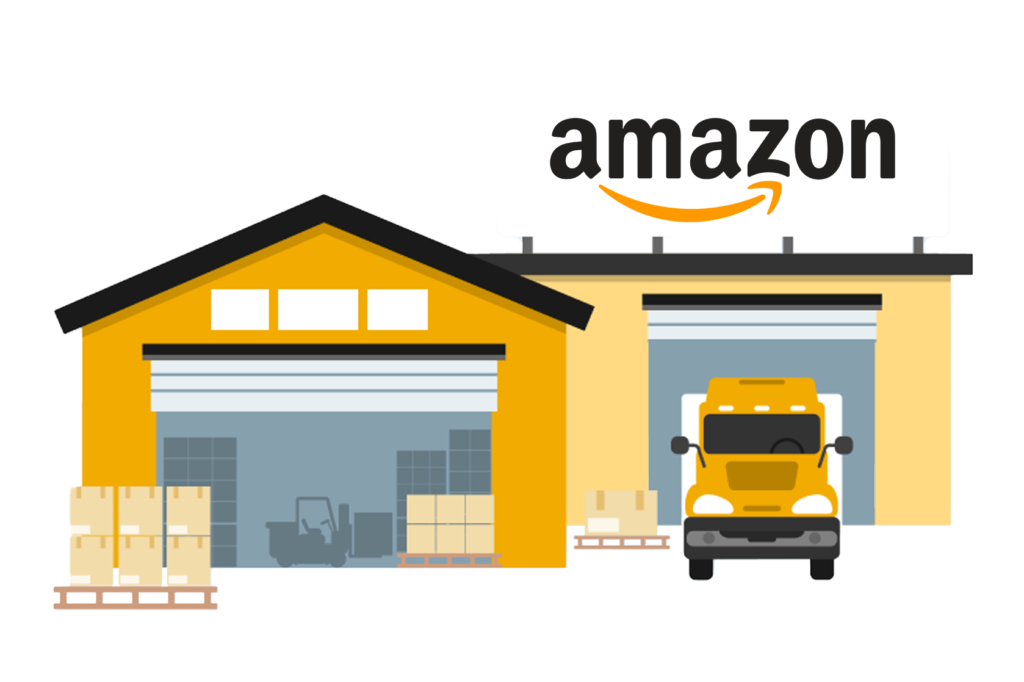
Why FBA is Essential for Passion Businesses
The fulfillment method you choose fundamentally determines whether you build a job or a business. This is a crucial distinction that passionate entrepreneurs often overlook initially. Amazon FBA transforms your operation into genuine passive income. It handles warehousing, packing, and shipping while you focus on activities you actually enjoy. These might include improving products or creating content. This arrangement grants you access to 200 million Prime members. They specifically filter search results for Prime-eligible products. Your competition gets immediately excluded if they’re fulfilling orders themselves.
Moreover, FBA’s infrastructure gives you superpowers that solo sellers can’t match. You’ll offer same-day or two-day delivery. Returns processing becomes easy. Amazon’s customer service handles complaints. These benefits cost money through FBA fees, certainly. But they’re cheaper than trying to provide comparable service yourself. You’ll free up your time for higher-value activities. Instead of spending evenings in your garage printing shipping labels and hauling boxes to the post office, you’re developing new product variations. You’re connecting with customers on social media. Or you’re simply enjoying the lifestyle freedom that motivated you to start a business in the first place.
FBA Setup Process
Sending your first shipment to Amazon feels intimidating initially. But the platform guides you through each step methodically once you understand the basic workflow. Navigate to your inventory page. Click “Send Replenished Inventory.” Follow the prompts to tell Amazon what products you’re shipping and in what quantities. Amazon responds by assigning FNSKU labels. These are unique barcodes identifying your specific products within their vast warehouse network. You must affix these to every individual unit before shipping.
Here’s a time-saving tip that prevents endless hours of manual sticker application. Arrange for your manufacturer to print FNSKU labels directly on your packaging during production. This service typically costs a few cents per unit. But it eliminates tedious prep work while ensuring professional-looking labels. These won’t peel off during transit or storage. After labeling, simply box up your products. Print the shipment labels Amazon provides. Either schedule UPS pickup from your location or drop the boxes at a UPS store. Within days, your inventory appears in Amazon’s warehouse. It’s ready to fulfill customer orders automatically.
FBA vs. FBM Comparison
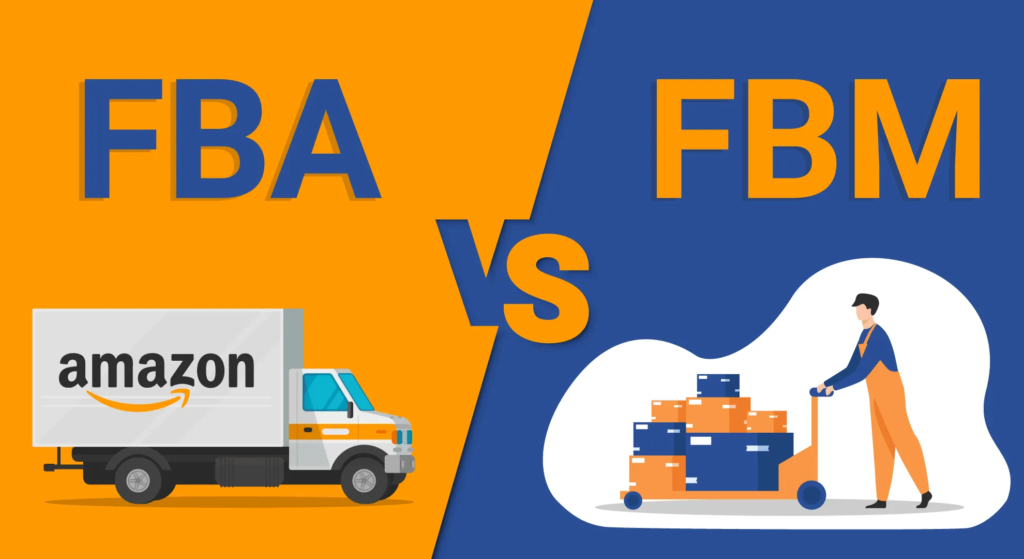
Some sellers choose FBM (Fulfillment by Merchant). They handle shipping themselves to avoid FBA fees. But this approach sacrifices the primary advantage that makes Amazon attractive: passive income potential. When you fulfill orders yourself, each sale creates work. You’re printing labels, boxing products, driving to the post office. You’re dealing with damaged shipments and handling return logistics. This workload might seem manageable at ten orders weekly. But it quickly becomes overwhelming if your product succeeds. You’re processing fifty or hundred orders daily. You’re trying to maintain quality and speed.
Therefore, FBA makes sense for virtually all sellers building real businesses. Not just side hustles they’re willing to actively manage daily. Yes, you pay fees for the service. Amazon charges based on product size and weight. But you receive value far exceeding those costs. You save time, get Prime eligibility, and access professional fulfillment infrastructure. The goal is building a business where you occasionally email your manufacturer requesting more inventory. Then Amazon handles everything else while profits accumulate. This creates the freedom-based lifestyle that attracted you to entrepreneurship initially.
Step 7: Amazon Launch Strategy – The Honeymoon Phase

The Critical Launch Window
Amazon rewards new products that demonstrate immediate traction with algorithmic preferential treatment. Sellers call this the “honeymoon phase” during your first few weeks. When your listing goes live, Amazon essentially tests it. They show your product to searchers and measure how many click and purchase. They compare this to established competitors. If customers respond positively through strong click-through rates and conversions, Amazon interprets this as a signal. It indicates quality and relevance. Subsequently, they show your product to more people and higher in search results.
This snowball effect makes your launch period absolutely critical. Early momentum compounds dramatically. Slow starts become increasingly difficult to overcome. Therefore, you want to maximize sales velocity on day one. Don’t let sales trickle out gradually. This means preparing your promotional strategy before inventory even arrives at Amazon’s warehouse. The difference between selling five units your first day versus fifty units can determine your ranking. Within weeks, you’ll be on page one versus page five. That’s a positioning gap that massively impacts long-term success and profitability.
Launch Tactics That Work
Generating those crucial first sales requires mobilizing your network. Give people compelling reasons to buy immediately rather than putting your product on a mental wishlist. Start by telling everyone you know about your launch. Reach out to friends, family, social media followers, email list subscribers, and community members in your niche. But frame it as sharing something exciting rather than begging for pity purchases. Passionate entrepreneurs have natural advantages here. You’re genuinely excited about your product. This isn’t awkward promotion of something you chose purely for profit potential.
Additionally, leverage modern content platforms like TikTok. You can create engaging videos without showing your face. Use trending sounds. Stitch viral content. Insert clips of your product in action. This approach builds an audience before launch. You’re creating a warm group of potential customers who already know your brand. When you finally announce availability, combine personal networks with strategic content marketing. You’ll manufacture the launch velocity that triggers Amazon’s algorithms. This sets yourself up for sustained success. You won’t struggle for visibility from day one.
Authentic Marketing Advantage
Your passion provides an unfair advantage during launch. Authentic enthusiasm shines through every piece of content and communication you create. When a sneakerhead launches a shoe cleaning brand, they naturally speak the language of their community. They understand which influencers matter, now which features to highlight. They can create content that resonates. It comes from genuine experience rather than marketing research. This authenticity builds trust impossibly fast. Corporate brands feel manufactured and soulless in comparison.
Furthermore, passionate founders create better content effortlessly. They enjoy the process rather than viewing it as tedious marketing work. Making TikToks about sneaker cleaning feels fun when you love shoes. Writing product descriptions flows easily when you understand the pain points. Engaging with customers energizes you rather than draining energy. This sustainable enthusiasm carries you through the difficult early days. Most sellers quit during this phase. This ultimately separates successful passion products from the vast graveyard of abandoned listings. These were launched by people chasing trends they didn’t care about.
The Game-Changer: Amazon PPC (The Hidden Passion Product Multiplier)

What is Amazon PPC?
Amazon PPC (Pay-Per-Click) advertising functions as the express lane to the top of search results. It guarantees visibility that organic ranking takes months to achieve naturally. Instead of hoping Amazon’s algorithm eventually decides to show your product prominently, you bid on specific keywords. You appear in the “Sponsored” sections at the top and throughout search results pages. You pay only when someone actually clicks your ad. This means every dollar directly drives potential customers to your listing. Traditional advertising channels can’t match this marketing efficiency.
This targeting precision makes PPC especially powerful for passion products. You know exactly which keywords matter to your niche. A camping enthusiast advertising cookware bids on specific terms. Terms like “backpacking mess kit” or “ultralight camp cookware.” Casual sellers might miss these. You’re capturing highly-qualified customers at the exact moment they’re searching. Moreover, PPC provides immediate feedback about which keywords convert to sales. You’ll learn which waste money. This allows rapid optimization that compounds over time. You’ll refine campaigns based on real performance data.
Real Case Study: Maverick Transformation
The Maverick brand purchase illustrates PPC’s transformative power when properly implemented on an underoptimized listing. The previous owner had built a decent business generating $6,000 monthly profit. But he hit a frustrating plateau where growth stalled. This happened despite decent product reviews and reasonable pricing. Upon investigation, the new owner discovered the PPC campaigns were pausing at noon daily. They burned through their tiny budget. T
his meant the product disappeared from sponsored placements. It vanished precisely when many customers shopped during lunch breaks and afternoon browsing sessions.
Simply increasing the PPC budget and running ads 24/7 doubled monthly profits. Results went from $6,000 to $12,000 almost overnight. This was arguably the easiest $6,000 monthly raise anyone’s ever received from working a few hours. This dramatic improvement required zero product changes. No new photography. Minimal time investment. Just basic PPC optimization that the previous owner either didn’t understand or lacked confidence to implement. The case demonstrates how knowledge and passion for optimization can transform existing businesses. You can create opportunities for entrepreneurial buyers who see hidden potential others miss.
PPC Strategy for Passion Products
Effective PPC strategy begins conservatively with automatic campaigns. These let Amazon test which keywords work. Then you evolve toward manual campaigns targeting specific high-performing terms. Your research identified these. Start with modest daily budgets around $10-20 while your listing lacks reviews and conversion history. Expensive clicks won’t convert if your product page isn’t optimized yet. As sales accumulate and you gather review social proof, gradually increase spending. Capture more market share from competitors. Use profitability metrics to guide budget decisions. Don’t use arbitrary spending limits.
Your passion creates strategic advantages throughout this process. You instinctively understand which keywords indicate high purchase intent versus casual browsing. Someone selling camping gear knows that “ultralight backpacking stove” signals a serious buyer planning a trip. Meanwhile, “camping ideas” indicates someone daydreaming about future adventures. Bid aggressively on the former. Skip the latter. This nuanced understanding helps you achieve better returns on ad spend (ROAS) than competitors. They’re randomly bidding on keywords that research tools suggest. They don’t really comprehend customer psychology behind those searches.
Real Results: The Passion Product Formula in Action
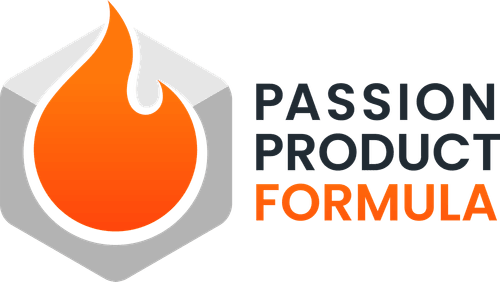
Success Story #1: Shoe Cleaning Kit
The shoe cleaning kit journey perfectly demonstrates the Passion Product Formula‘s power. Authentic enthusiasm meets strategic execution. Starting from genuine love for sneakers and frustration with available cleaning options, this product launched at $18. Expectations were modest but differentiation was clear. It positioned as the premium option for sneakerheads who cared about quality. Year one delivered $125,000 in revenue and $48,000 in profit. This was life-changing money for most people. Strong validation that the market wanted this solution.
However, the real magic appeared in year two. Revenue more than doubled to $320,000 as word spread organically through sneaker communities. Repeat customers returned for refills. Fast forward to today. This single passion product generates over $1.06 million annually in revenue. This demonstrates how starting with something you genuinely care about creates sustainable businesses. They grow year after year. The passion sustained effort through challenges. The expertise created superior positioning. The authentic connection with customers built loyalty. No purely profit-motivated competitor could replicate this.
Success Story #2: Maverick Brand
The Maverick acquisition illustrates the alternative path. You buy existing businesses and apply passion for optimization and growth strategies. Not product development. Purchased for $190,000 using seller financing (meaning only $95,000 upfront), this brand was generating modest $72,000 annually. Despite having quality products and decent reviews. The opportunity lay in applying systematic improvements. Keyword optimization. Main image redesign. PPC management. Leveraging product expansion opportunities the original owner never pursued.
These optimizations transformed Maverick from struggling to thriving. The brand achieved $1.48 million in revenue during 2024 alone. That’s a 1,955% increase from the initial purchase point. Projected 2025 revenue exceeds $3 million. This means the business will generate roughly 16 times the initial purchase price in a single year. This extraordinary return demonstrates how the right buyer with optimization passion and expertise can create immense value. They work from existing assets. Often faster and more predictably than building brands from scratch. Both paths work beautifully when aligned with what genuinely excites you as an entrepreneur.
The Two Paths to Success
These parallel success stories reveal something important. Amazon FBA success doesn’t require a single prescribed path. Rather, it requires alignment between your strengths and the opportunity you pursue. Building from scratch suits creators who love developing products. They enjoy testing prototypes. They want to birth entirely new brands into existence. Your passion for the product itself drives the journey. Alternatively, buying and optimizing existing businesses appeals to analytical personalities. They thrive on improving systems, analyzing data, and scaling operations. Not starting from zero.
Both approaches benefit enormously from the Passion Product Formula. Enthusiasm sustains you through inevitable challenges. Expertise creates competitive advantages that generic operators can’t match. Whether you’re developing the world’s best camping gear because you live outdoors every weekend, or acquiring underperforming outdoor brands because you love business optimization, passion provides the fuel. It transforms opportunities into reality. The key is honest self-assessment about which path aligns with your personal strengths, interests, and available capital. Then commit fully to that direction rather than becoming paralyzed by indecision.
Overcoming Common Obstacles

Cost Concerns
Money anxiety stops more aspiring Amazon sellers than any other factor. Startup costs between $10,000-$50,000 feel insurmountable to many passionate individuals. They have million-dollar ideas but limited savings. However, this obstacle becomes manageable when you consider flexible approaches. Start smaller with reduced inventory orders. Launch with pre-orders to fund manufacturing. Partner with someone who has capital while you contribute expertise. Additionally, purchasing existing businesses with seller financing effectively lets you use future profits to pay for the business. You need just 50% upfront rather than full payment.
Furthermore, perspective matters enormously when evaluating whether you can afford to start an Amazon business. Consider whether you can afford not to. That $20,000 investment might seem huge today. But it pales compared to the lifetime earnings differential. Compare staying in an uninspiring job versus building a business generating $100,000+ annually in profit. Many successful sellers started with credit cards, personal loans, or borrowed money from family. They understood the investment could transform their entire financial future. These were calculated risks that paid off exponentially. They went beyond the initial discomfort of deploying scarce capital.
Time and Complexity
The learning curve for Amazon FBA legitimately intimidates beginners. They feel overwhelmed by SKUs, PPC, ACOS, FNSKUs, and countless other acronyms. Experienced sellers casually throw these around. Moreover, the platform constantly evolves with new policies, fee structures, and best practices. Even experienced sellers can feel behind. However, this complexity actually creates your opportunity. Most people quit during the learning phase. This reduces competition for those willing to invest time upfront understanding the system.
Thankfully, incredible free resources exist. Travis’s comprehensive 10-hour Amazon FBA course on YouTube walks you through every step systematically. Additionally, the FBA program itself handles the most complex logistics. You’re not figuring out shipping rates to 50 states, not negotiating with carriers, and not managing warehouse operations. Instead, you focus on strategic decisions. Product selection. Listing optimization. Advertising. Amazon’s infrastructure handles operational complexity. After the initial learning period, running an FBA business requires surprisingly little ongoing time investment. Especially compared to traditional businesses or jobs where you trade hours for dollars indefinitely.
Fear of Failure
Perhaps the biggest obstacle isn’t financial or educational but psychological. It’s the terrifying possibility of investing time and money into a business that fails publicly and embarrassingly. This fear feels especially acute for passionate entrepreneurs. Failure wouldn’t just mean losing money. It would potentially mean facing judgment from the very community you hoped to serve. However, reframing failure as education rather than defeat helps enormously. Recognize that most successful Amazon sellers failed with their first or second products. Then they found winners.
Moreover, the Passion Product Formula inherently reduces failure risk. It aligns what you’re good at with what markets want. You’re not randomly choosing products from trending lists. Your expertise prevents basic mistakes that sink novice sellers, enthusiasm sustains effort through the challenging growth phase. Your authentic connection with customers creates loyalty that weathers competitive storms. While nothing guarantees success, pursuing passion products dramatically improves your odds. Compare this to chasing profits in categories you don’t understand or care about. This turns entrepreneurship from a gamble into a calculated bet. Knowledge and dedication tilt odds heavily in your favor.
Your Action Plan: Implementing the Passion Product Formula
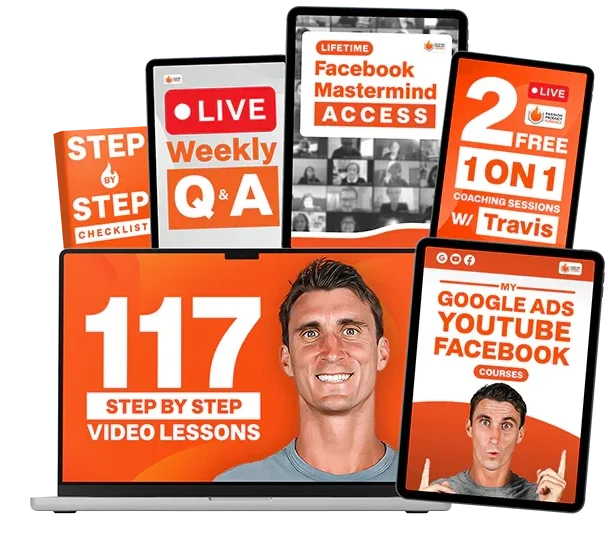
30-Day Getting Started Plan
Transforming from aspiring seller to actual business owner requires structured action. Not endless planning. A 30-day sprint focuses your energy productively. Week one involves deep passion exploration and market research. Identify what genuinely excites you. Use Jungle Scout and Helium 10 to validate demand exists. Narrow to 2-3 specific product ideas that balance passion with profitability. Week two shifts to account setup and business infrastructure. This includes filing for your LLC if you’re going that route. Create your Amazon seller account. Begin manufacturer outreach to understand pricing and MOQ requirements.
By week three, you’re designing your brand identity. Use Fiverr, Upwork, or FBAcreatives. Place your first manufacturing order after receiving and approving samples. Week four focuses on listing creation using all the optimization techniques discussed. Keyword-rich titles. Compelling main images. Benefit-focused bullets. Preparation for launch day. This compressed timeline prevents analysis paralysis while maintaining quality. It pushes you from dream to reality in a single month. Not years of “someday” thinking that never manifests into action.
Amazon Essential Resources Recap
Success on Amazon requires leveraging existing tools. Don’t reinvent wheels. Several resources dramatically accelerate your progress. Jungle Scout‘s free estimator reveals sales volumes for any product. This demystifies which opportunities actually generate significant revenue. They might just appear successful superficially. Helium 10‘s keyword tools (accessible with discount codes through the links mentioned) uncover what customers search for. They reveal gaps in the market. This provides the foundation for both product selection and listing optimization. It drives organic visibility.
For design and listing creation, FBAcreatives.com specializes in Amazon-specific optimization. Teams understand what converts browsers into buyers on this unique platform. Their 40% discount makes professional services surprisingly accessible. This potentially pays for itself through improved conversion rates on day one. Meanwhile, if you’re considering the buy-and-optimize path, Empire Flippers and similar business brokers list hundreds of Amazon FBA businesses. Various price points available. Many struggle from basic optimization gaps. Your newfound knowledge could easily fix these. Each resource serves specific purposes in your journey. Strategic deployment separates efficient entrepreneurs from those spinning wheels unnecessarily.
The Passion Product Formula Mindset
Beyond tactics and tools, sustainable success requires cultivating the right mental framework. Understand why you’re building this business. Passion Product Formula thinking means consistently asking “Does this excite me?” before making major decisions. Whether selecting products, creating content, or expanding into new categories. This filter prevents the common trap of chasing profits into niches that bore you. Eventually this leads to burnout and abandoned businesses. This happens despite decent financial performance.
Furthermore, remember that authenticity creates competitive moats. Copycats can’t breach these regardless of their resources. When you genuinely love your niche, you notice details others miss. You serve customers with empathy others can’t fake. You persist through challenges that make mercenary competitors quit. This isn’t motivational platitude but practical business strategy. Passion compounds over years into expertise, relationships, and brand equity. These would cost competitors millions to replicate. Therefore, choosing products you care about isn’t indulgent or naive. It’s the smartest long-term business decision you can make in today’s crowded marketplace.
From Side Hustle to Empire: Your Amazon FBA Journey Starts Today
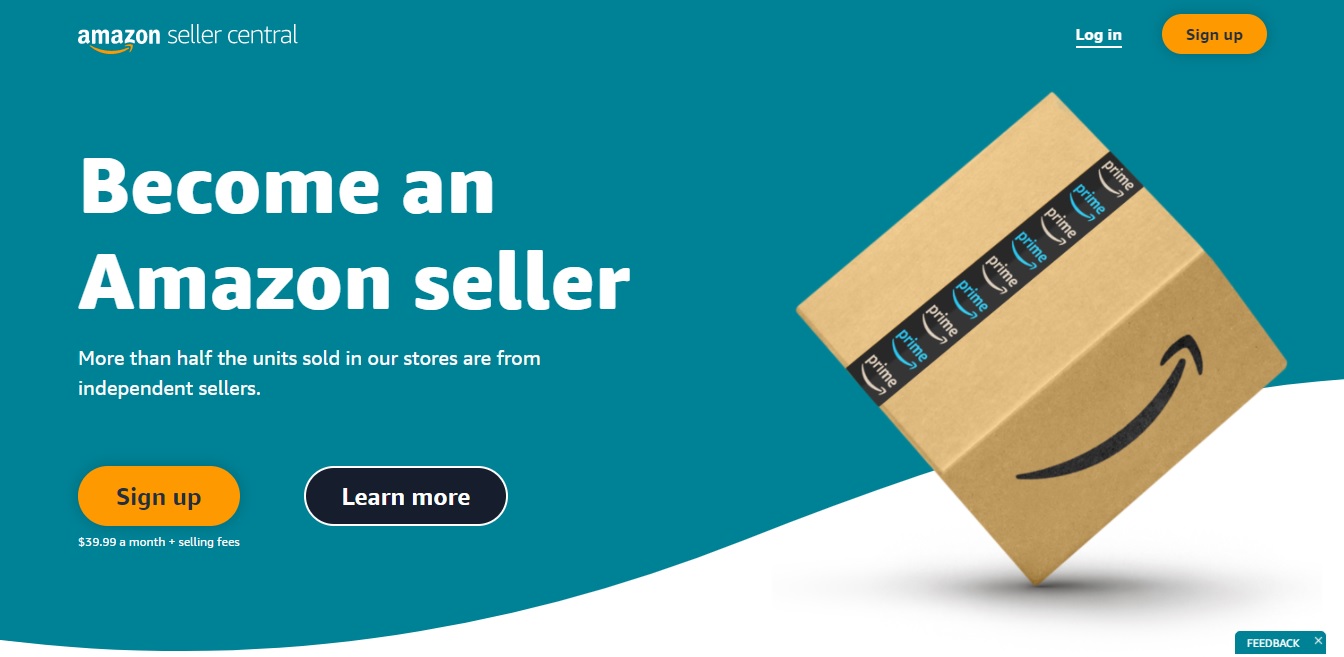
Amazon FBA represents the most accessible path to financial freedom available today. It has lower barriers to entry than traditional retail. It offers scalability that service businesses can’t match. The statistics aren’t motivational fiction but reality. 43% of sellers genuinely make over $100,000 annually. The platform continues growing as more consumers shift spending online. With $600 billion in annual sales, the opportunity remains strong. Two-thirds comes from third-party sellers. The opportunity hasn’t diminished despite increased competition. The overall market keeps expanding faster than seller growth.
However, the differentiator between the successful minority and struggling majority isn’t secret tactics or lucky timing. It’s the Passion Product Formula mindset. This aligns what you love with what markets want. This approach transforms entrepreneurship from a grueling slog into an enjoyable journey. Challenges feel like puzzles rather than obstacles. Your path might involve launching a shoe cleaning brand because sneakers excite you. Or acquiring underperforming camping gear brands because optimizing businesses thrills you. Either way, passion provides the fuel. It carries you from zero to seven figures while competitors burn out. They pursued profits in niches they never cared about. The question isn’t whether you can succeed on Amazon. Rather: what are you passionate about, and when will you start turning that enthusiasm into income?
Frequently Asked Questions
How much money do I need to start an Amazon FBA business?
Starting an Amazon FBA business typically requires $10,000-$50,000. This depends on your product complexity, manufacturing location, and initial inventory quantities. However, you can start smaller with reduced orders around $5,000-$7,000 for simpler products. Alternatively, purchase existing businesses with seller financing requiring just 50% upfront. The exact amount varies significantly. It depends on whether you’re launching a new product or buying an established business. Purchases sometimes offer faster returns on investment despite higher initial costs.
What’s the difference between the Passion Product Formula and just finding any profitable product?
The Passion Product Formula specifically combines your genuine interests with market demand. It creates businesses you actually enjoy running long-term. This differs from purely profit-motivated ventures. While you could succeed temporarily by choosing any profitable product, passion provides sustainable competitive advantages. You’ll benefit from authentic marketing, deeper customer understanding, and persistent motivation during challenging periods. Profit-focused competitors often quit during these times. This approach builds brands rather than just products. You create defensible businesses that grow in value over time.
How long does it take to start making money with Amazon FBA?
You can generate your first sales within 30-60 days from deciding to start. Follow the seven-step framework systematically. This includes product research, manufacturing, shipping to Amazon, and launch. However, building a genuinely profitable business takes longer. Consistent $5,000-$10,000 monthly typically requires 6-12 months. During this time, you optimize listings, gather reviews, refine PPC campaigns, and build organic rankings. Buying existing businesses shortens this timeline dramatically. They’re already generating revenue on day one. Though optimization for growth still takes several months.
Is Amazon FBA still worth it in 2025, or is it too saturated?
Amazon FBA absolutely remains viable in 2025 despite increased competition. The overall market continues growing faster than seller growth. This creates expanding opportunities for quality products. While launching generic products in obvious categories proves difficult, the Passion Product Formula specifically targets niches. Your expertise creates differentiation that saturated markets can’t provide. Furthermore, many existing sellers lack fundamental optimization skills. This means knowledgeable entrepreneurs can still capture significant market share. Even in “competitive” categories. They do this through superior listing optimization, PPC management, and customer service.
What are the main Amazon fees I need to budget for?
Amazon charges several fees that impact profitability. There’s a 15% referral fee on each sale (reducible to 5% through the Brand Referral Program). Monthly FBA storage fees based on cubic footage. Pick-and-pack fulfillment fees per unit shipped (varying by size/weight). A $39.99 monthly subscription for Professional seller accounts. Additionally, you’ll invest in PPC advertising. This typically ranges from 10-30% of sales depending on your category competitiveness. When pricing products, ensure margins accommodate all these fees. Maintain 30%+ net profit for sustainable business operations.
Should I start with a new product or buy an existing Amazon business?
This decision depends on your strengths, available capital, and personal preferences. One path isn’t universally superior. Starting new products suits creators who enjoy developing brands from scratch. This typically requires less upfront capital ($10,000-$30,000). But it demands more time before profitability. Buying existing businesses appeals to optimizers who prefer scaling established operations. This requires more capital ($50,000-$200,000+, often with financing). But it generates immediate cash flow while you improve performance. Both approaches work excellently when aligned with your passion. Building products you love or optimizing businesses in categories you understand deeply.
How important are product reviews, and how do I get them initially?
Product reviews dramatically impact conversion rates and organic rankings. Listings typically need 15-25 reviews before conversion rates stabilize at optimal levels. Initially, you gather reviews through Amazon’s Request a Review button for every order. Use the Vine program for enrolled brand registry members. Ensure exceptional customer service that motivates satisfied customers to leave feedback voluntarily. Never offer incentives for reviews or use services promising review generation. These violate Amazon’s terms and risk account suspension. Focus instead on delivering genuinely excellent products. Passionate customers naturally want to recommend these. This aligns perfectly with the Passion Product Formula approach.
Can I run an Amazon FBA business with a full-time job?
Amazon FBA specifically accommodates busy schedules better than most businesses. The FBA program handles order fulfillment automatically. This requires minimal daily management once your listing is optimized. Most sellers successfully run FBA businesses while working full-time. They dedicate 5-10 hours weekly to inventory management, PPC monitoring, customer service, and strategic planning. The initial setup phase demands more time (20-30 hours over 4-6 weeks). But ongoing operations become increasingly passive as systems stabilize. This flexibility makes FBA ideal for testing entrepreneurship. You maintain employment security until your business scales sufficiently to replace job income.
What product categories work best for the Passion Product Formula?
Any category where you possess genuine knowledge and enthusiasm can work beautifully. Though certain characteristics indicate stronger opportunities. Products priced $15-$85. Items customers purchase repeatedly creating lifetime value. Niches with engaged communities you’re already part of. Categories where passion translates into expertise that casual sellers lack. Consumables, hobby-related items, specialized tools, and lifestyle products generally align well with passion-based approaches. Authentic enthusiasm shines through in marketing and customer interaction. Avoid categories requiring FDA approval, hazardous materials handling, or extreme size/weight. These increase complexity and costs beyond beginner capabilities.
What happens if my product doesn’t sell?
If sales disappoint initially, systematic troubleshooting usually identifies fixable problems. You won’t need to abandon the product entirely. Common issues include poor main images (redesign for more impact). Weak keyword optimization (add high-volume search terms). Insufficient PPC budget (increase to boost visibility). Or pricing problems (test higher or lower prices). The Passion Product Formula provides advantages here. Your niche knowledge helps diagnose what’s wrong. You understand whether the product itself is flawed or just the presentation. Worst case, unsold inventory can be returned from Amazon warehouses. Liquidate through discount channels. Or donate for tax write-offs. This minimizes financial losses while you apply lessons to your next attempt.


